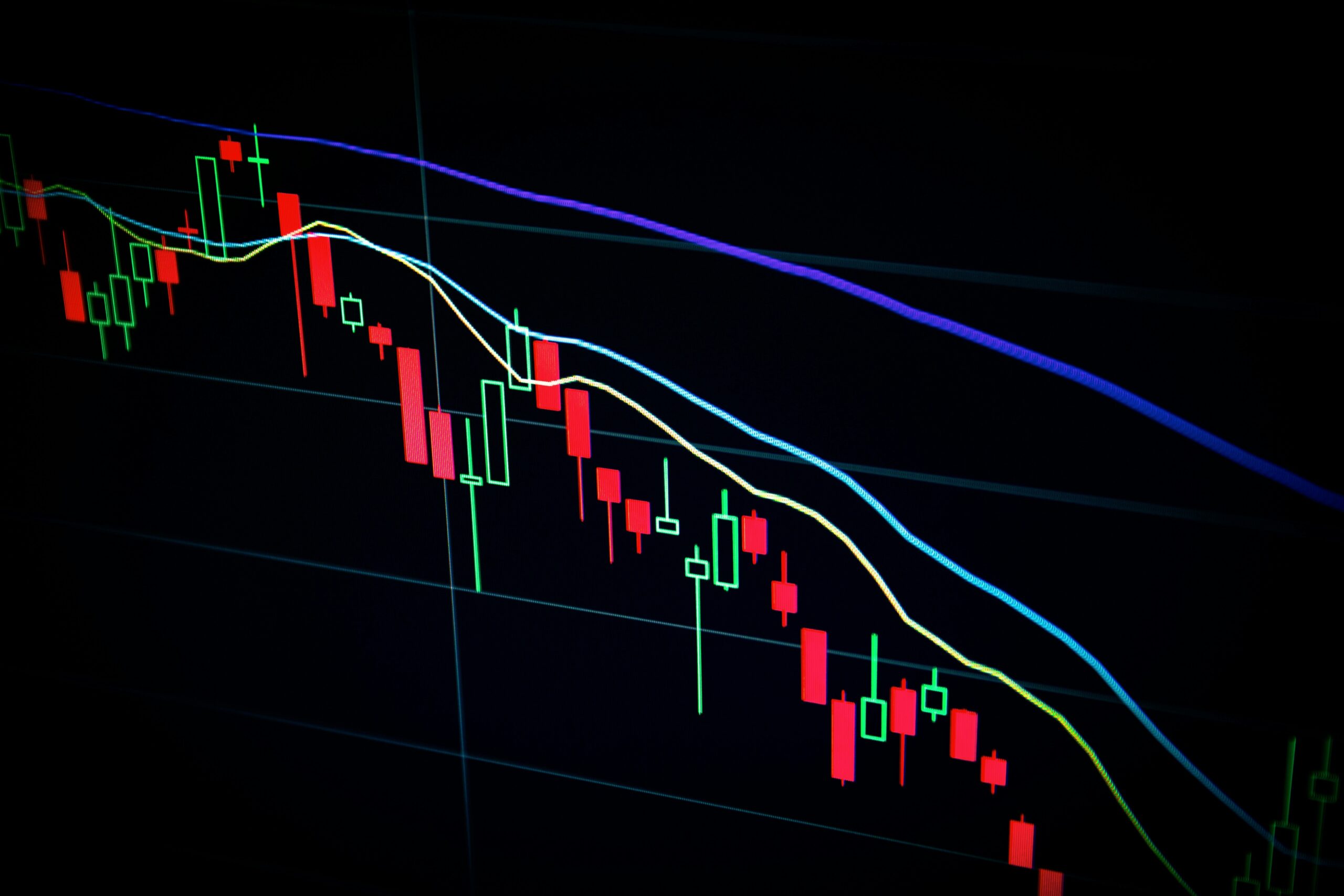Introduction to the Stock Market
The stock market represents a collection of exchanges and platforms where stocks, or shares of publicly held companies, are bought and sold. At its core, the stock market serves as a critical component of the global economy, enabling companies to raise capital by issuing shares to the public and providing investors with opportunities to earn returns on their investments.
Stocks, also known as equities, signify ownership in a company. When an individual purchases a stock, they acquire a piece of the company and, consequently, a share of its profits and assets. These shares are traded on stock exchanges, such as the New York Stock Exchange (NYSE) or the NASDAQ, which facilitate the buying and selling process through a regulated and transparent framework.
The primary functions of the stock market include capital raising for companies, wealth generation for investors, and market liquidity. By issuing stock, companies can secure the necessary funds for expansion, research, and other business activities. Investors, on the other hand, can generate wealth through dividends and capital gains, while the exchange itself ensures that there’s sufficient liquidity, allowing for efficient buying and selling of shares.
The historical evolution of stock markets dates back several centuries. The Amsterdam Stock Exchange, established in 1602, is often considered the world’s first official stock market. Over time, stock markets have expanded globally, adapting to technological advancements and regulatory changes. Today, they play a pivotal role in the financial infrastructure of modern economies, driving growth and innovation.
Understanding the stock market is essential for anyone looking to navigate the complexities of today’s financial landscape. By grasping the basic principles and key terminology, investors can make more informed decisions and leverage the stock market’s potential to achieve their financial goals.
Current Market Trends
The stock market today is shaped by a myriad of factors, each contributing to its dynamic and often unpredictable nature. Notably, certain market sectors have shown remarkable resilience and growth, while others have struggled under various pressures. One of the standout performers in recent times has been the technology sector. Driven by continuous innovation and a rapid pace of digital transformation, tech companies have consistently outperformed other sectors. This trend is expected to persist as advancements in artificial intelligence, cloud computing, and cybersecurity continue to drive investor interest.
Conversely, traditional sectors such as retail and energy have faced significant challenges. The retail sector has been particularly impacted by shifting consumer behaviors and the rising dominance of e-commerce. Meanwhile, the energy sector has had to navigate fluctuating oil prices and increasing regulatory scrutiny related to environmental concerns. These factors have collectively contributed to the underperformance of these sectors compared to their tech counterparts.
Recent developments have also played a crucial role in shaping the current market landscape. Geopolitical events, such as trade tensions and international conflicts, have introduced a layer of uncertainty that often results in market volatility. For instance, the ongoing trade negotiations between major economies can significantly influence investor sentiment and market movements. Similarly, economic data releases, including employment reports and GDP growth figures, provide critical insights into the health of the economy, thereby impacting stock prices.
Moreover, the integration of technological advancements into various industries has been a key trend. The accelerated adoption of digital tools and platforms during the pandemic has fundamentally altered business operations and consumer interactions. This shift has not only benefited tech companies but has also prompted other sectors to innovate and adapt, further influencing market trends.
In summary, understanding the current market trends requires a comprehensive analysis of sector performance, recent developments, and the broader economic context. By staying informed about these factors, investors can better navigate the complexities of the stock market today.
Major Stock Exchanges Around the World
The global stock market is a complex and interconnected system, with numerous stock exchanges playing pivotal roles in facilitating trade and investment. Among these, the New York Stock Exchange (NYSE) and NASDAQ stand out as two of the most influential exchanges. The NYSE, located on Wall Street, is renowned for its stringent listing requirements and hosts many blue-chip companies, such as Apple and IBM. It operates from 9:30 AM to 4:00 PM Eastern Time, providing a crucial platform for trading equities and securities.
Similarly, NASDAQ, also based in the United States, is known for its electronic trading system and a significant focus on technology stocks. Companies like Microsoft, Google, and Facebook are listed here, making it a hub for tech giants. NASDAQ’s operational hours mirror those of the NYSE, contributing substantially to the overall market liquidity.
Across the Atlantic, the London Stock Exchange (LSE) serves as another cornerstone of the global financial markets. The LSE is one of the oldest stock exchanges, with a diverse array of companies from various sectors, including energy, mining, and finance. Operating from 8:00 AM to 4:30 PM Greenwich Mean Time, it plays a crucial role in bridging the trading hours between the Asian and American markets.
Other significant stock exchanges include the Tokyo Stock Exchange (TSE) and the Shanghai Stock Exchange (SSE). The TSE, operational from 9:00 AM to 3:00 PM Japan Standard Time, is home to major Japanese corporations like Toyota and Sony. The SSE, opening from 9:30 AM to 3:00 PM China Standard Time, has seen rapid growth and increasing global significance, especially with the rise of Chinese economic powerhouses like Alibaba and Tencent.
International stock exchanges collectively contribute to the global market’s fluidity and robustness. They enable cross-border investment, allowing investors to diversify portfolios and capitalize on global economic trends. This interconnectedness underscores the importance of understanding not just local, but global market dynamics when navigating the stock market today.
Key Indicators and Metrics
The stock market is often perceived as a barometer of economic health, with key indicators and metrics serving as critical tools for investors to gauge performance and make informed decisions. Among the most prominent indices are the S&P 500, the Dow Jones Industrial Average (DJIA), and the NASDAQ Composite. These indices provide a snapshot of market trends, reflecting the movements of a selected group of stocks that represent a broader market segment.
The S&P 500, composed of 500 of the largest publicly traded companies in the United States, is widely regarded as the best single gauge of large-cap U.S. equities. It offers a comprehensive overview of the market, given its broad inclusion of various sectors. The Dow Jones Industrial Average, on the other hand, consists of 30 significant companies and is often used to measure the stock market’s health and investor sentiment. Meanwhile, the NASDAQ Composite includes over 3,000 stocks, with a strong emphasis on technology and biotechnology companies, making it a critical indicator for tech sector performance.
Beyond these indices, investors rely on specific metrics to evaluate individual stocks and overall market conditions. The Price-to-Earnings (P/E) ratio is one such metric, representing the ratio of a company’s current share price to its earnings per share (EPS). A higher P/E ratio may indicate that a stock is overvalued, or that investors are expecting high growth rates in the future. Conversely, a lower P/E ratio might suggest that a stock is undervalued or that the company is experiencing difficulties.
Dividend yield is another key metric, showing the annual dividend income an investor can expect relative to the stock’s current price. It is particularly important for income-focused investors who prioritize steady income streams over capital gains. Market capitalization, which is calculated by multiplying a company’s shares outstanding by its stock price, provides insight into the company’s size and market value. Large-cap stocks are typically more stable, while small-cap stocks might offer higher growth potential but come with increased risk.
By understanding and analyzing these key indicators and metrics, investors can develop a more nuanced approach to stock market investments, tailoring their strategies to align with their financial goals and risk tolerance.
Impact of Economic Policies
Economic policies play a pivotal role in shaping the dynamics of the stock market, influencing investor sentiment and market performance. Central banks, through monetary policies, have a direct impact on interest rates which in turn affects borrowing costs and consumer spending. For instance, when central banks lower interest rates, it typically leads to cheaper borrowing, encouraging businesses to invest and consumers to spend more, thereby boosting stock market activity. Conversely, higher interest rates can lead to reduced borrowing and spending, often resulting in market downturns.
Fiscal policies, including government spending and taxation, also significantly affect the stock market. Increased government spending can inject liquidity into the economy, leading to higher corporate revenues and improved stock performance. Taxation policies, such as corporate tax cuts, can enhance profitability for companies, making their stocks more attractive to investors. On the other hand, higher taxes can reduce disposable income and corporate profits, potentially leading to a decline in stock prices.
Regulatory changes are another critical factor. Stricter regulations can increase compliance costs for companies, negatively impacting their profitability and stock prices. However, regulatory reforms aimed at enhancing market efficiency and transparency can bolster investor confidence, fostering a more robust stock market.
Historical examples vividly illustrate the impact of economic policies on the stock market. The Federal Reserve’s decision to lower interest rates during the 2008 financial crisis is a pertinent example. This policy move was instrumental in stabilizing the financial system and stimulating economic recovery, which ultimately led to a significant rebound in the stock market. Similarly, the implementation of tax cuts in the 1980s under President Reagan, known as “Reaganomics,” fueled economic growth and led to a prolonged bull market.
The Role of Technology and Innovation
The stock market today is significantly influenced by advancements in technology and innovation. One of the most notable developments is algorithmic trading. This technique leverages complex mathematical models and high-speed computing to execute trades at speeds and frequencies that are impossible for human traders. Algorithmic trading enhances market efficiency and liquidity but also brings challenges like market volatility and flash crashes. As a result, regulatory frameworks and monitoring systems are continuously evolving to mitigate potential risks associated with this technology.
Blockchain technology is another transformative force in the financial markets. Originally conceived as the underlying technology for cryptocurrencies, blockchain has found a myriad of applications in the stock market. Its ability to provide a decentralized, transparent, and secure ledger system is revolutionizing the way transactions are recorded and verified. Blockchain can streamline post-trade processes, reduce settlement times, and enhance the overall transparency of financial transactions, thus potentially lowering costs and increasing trust among market participants.
The rise of fintech companies is also reshaping the landscape of stock trading and investment analysis. Fintech innovations, ranging from robo-advisors to mobile trading apps, are making the stock market more accessible to a broader audience. These technologies offer sophisticated tools for portfolio management, risk assessment, and real-time data analysis, empowering individual investors with capabilities previously reserved for institutional traders. Moreover, artificial intelligence and machine learning are being integrated into these platforms to provide personalized investment advice and predictive analytics, further enhancing decision-making processes.
These technological advancements are not merely changing the way trades are executed but are fundamentally transforming the investor experience. By providing greater access to information, increasing transaction speeds, and improving market transparency, technology and innovation are democratizing the stock market and paving the way for a new era of financial inclusivity and efficiency.
Investor Sentiment and Psychology
Investor sentiment and psychology play a crucial role in the stock market, significantly influencing market trends and individual investment decisions. Understanding these psychological aspects can help investors navigate the complexities of the market more effectively. One prominent theory in this domain is the concept of herd mentality, where investors tend to follow the actions of the majority. This behavior often leads to overvalued or undervalued stocks, as seen during market bubbles and crashes.
The fear and greed index is another important tool that gauges the overall market sentiment. High levels of greed can drive stock prices to unsustainable levels, while excessive fear can create buying opportunities as prices drop. Recognizing these patterns can provide valuable insights for making informed investment choices.
Market bubbles, characterized by rapid price increases followed by a sharp decline, often result from irrational exuberance and speculative behavior. Historical examples, such as the dot-com bubble and the housing market crash, illustrate the devastating effects of unchecked investor enthusiasm and the importance of maintaining a balanced perspective.
To manage emotions and make rational investment decisions, investors can adopt several strategies. First, setting clear investment goals and developing a well-defined strategy can provide a roadmap for navigating market fluctuations. Diversification is another key tactic, spreading investments across various asset classes to mitigate risk. Additionally, staying informed about market trends and economic indicators can help investors make data-driven decisions rather than succumbing to emotional impulses.
Practicing mindfulness and maintaining a long-term perspective are also essential for managing the psychological challenges of investing. By acknowledging the inherent uncertainties of the stock market and avoiding reactive decisions based on short-term market movements, investors can better position themselves for sustainable success. Understanding the impact of investor sentiment and psychology is vital for anyone looking to thrive in the stock market today.
Future Outlook and Predictions
The future of the stock market is a topic of immense interest, encompassing expert predictions, potential challenges, and emerging opportunities. Analysts and market experts suggest that the stock market’s trajectory will continue to be influenced by a myriad of factors, including technological advancements, regulatory changes, and shifts in consumer behavior.
One of the key trends anticipated to shape the future of the stock market is sustainable investing. As awareness about environmental, social, and governance (ESG) issues grows, more investors are prioritizing sustainability in their portfolios. Companies with strong ESG practices are likely to attract more capital, driving their stock prices higher. This shift towards responsible investing not only reflects changing investor values but also indicates a more holistic approach to assessing corporate performance.
Global events, particularly those related to climate change, are expected to have a significant impact on the stock market. Climate-related risks, such as extreme weather events and regulatory changes aimed at reducing carbon emissions, may affect the profitability of certain industries, especially those reliant on fossil fuels. Conversely, sectors focused on renewable energy and green technologies could see substantial growth as they gain favor among investors seeking to mitigate climate risks.
In addition to environmental factors, technological advancements are predicted to drive market dynamics. Innovations in artificial intelligence, blockchain, and biotechnology are likely to create new investment opportunities. Companies that successfully harness these technologies may experience accelerated growth, while those that fail to adapt could face obsolescence.
For investors, navigating the future stock market landscape requires a strategic and informed approach. Diversifying portfolios to include a mix of traditional and emerging sectors can mitigate risks and capitalize on growth opportunities. Staying informed about global events, regulatory changes, and technological advancements is crucial for making well-informed investment decisions.
Overall, while the stock market’s future is inherently uncertain, understanding the underlying trends and preparing for potential challenges can help investors position themselves for success in an ever-evolving financial landscape.



